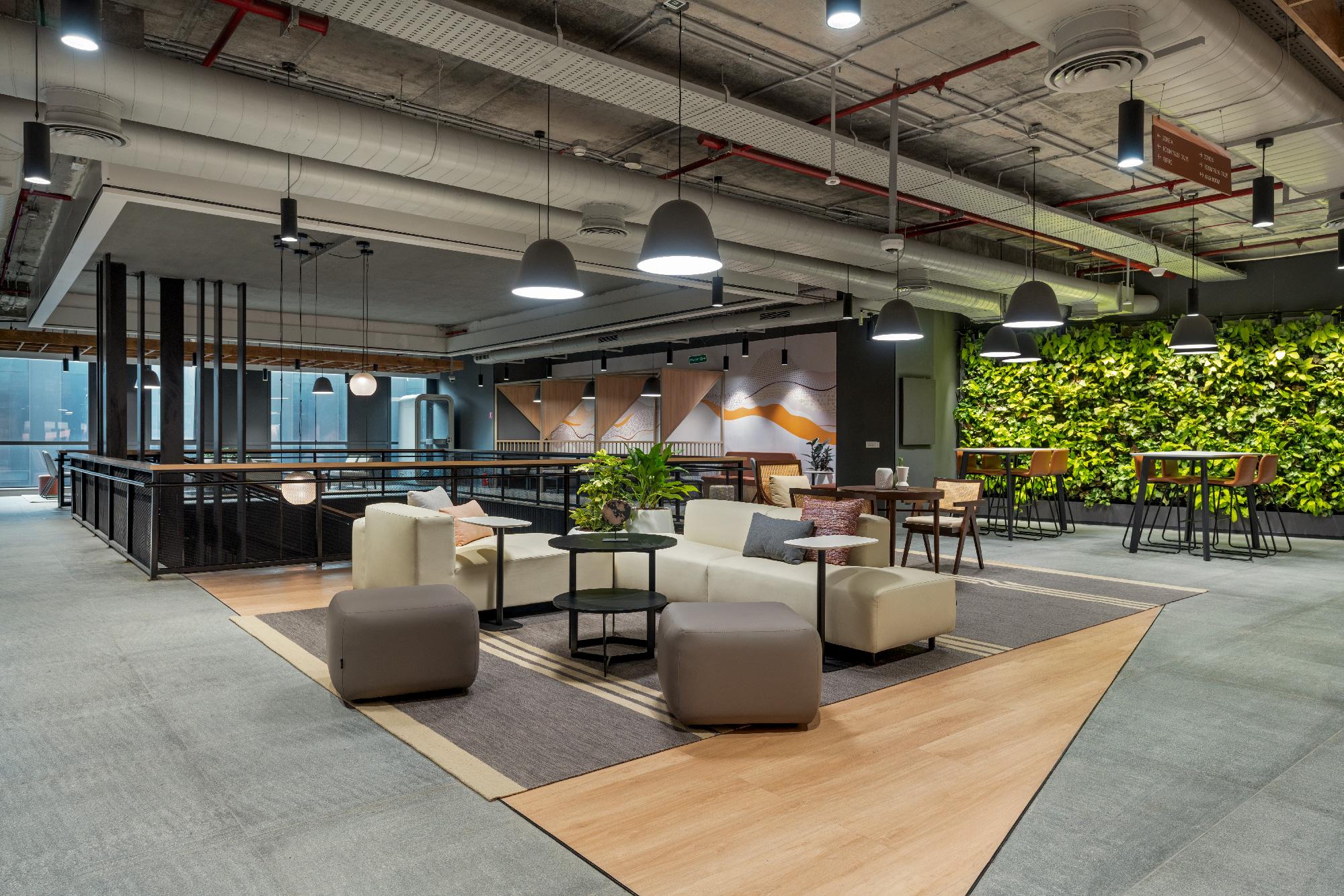
Essential Elements of a Wellness-Centred Workplace Design
In recent years, there has been a growing trend towards wellness-centred workplace designs that prioritise employee well-being and productivity. These designs focus on creating an environment that supports the physical, mental, and emotional health of employees, which in turn leads to higher levels of engagement, motivation, and productivity. This philosophy recognizes the importance of investing in the well-being of employees, who are an organisation's most valuable asset. In this article, we will discuss the essential elements of a wellness-centred workplace design and how it can benefit both employees and organisations.
The growing recognition of the benefits of investing in employee well-being and productivity has led to an increase in organisations redesigning their workspaces with a wellness-focused office interior in mind, often with IWBI's WELL certification as a standard. In this blog post, we will delve into the essential elements of a wellness-centred workplace design and explore how Space Matrix incorporates these elements into its approach.
Natural Light and Biophilic Design
The WELL Building Standards provide guidelines for office interior lighting that aim to minimise disruption to the body's circadian rhythms. Exposure to natural light has been linked to better sleep, reduced stress, and improved mood. Professor Alan Hedge at Cornell University conducted a study in 2018 that found the ideal amount of daylight can reduce eyestrain and headaches by up to 84% among office workers.
Biophilic office design integrates natural elements such as plants, natural materials, and water features to create a soothing and relaxing work environment. Indoor plants can significantly improve the air quality within the workspace, helping employees breathe more easily while also improving their attention span, creativity, mood, and reducing stress levels. The use of natural materials and textures, such as wood and stone, can also enhance the mood and productivity of the workforce.
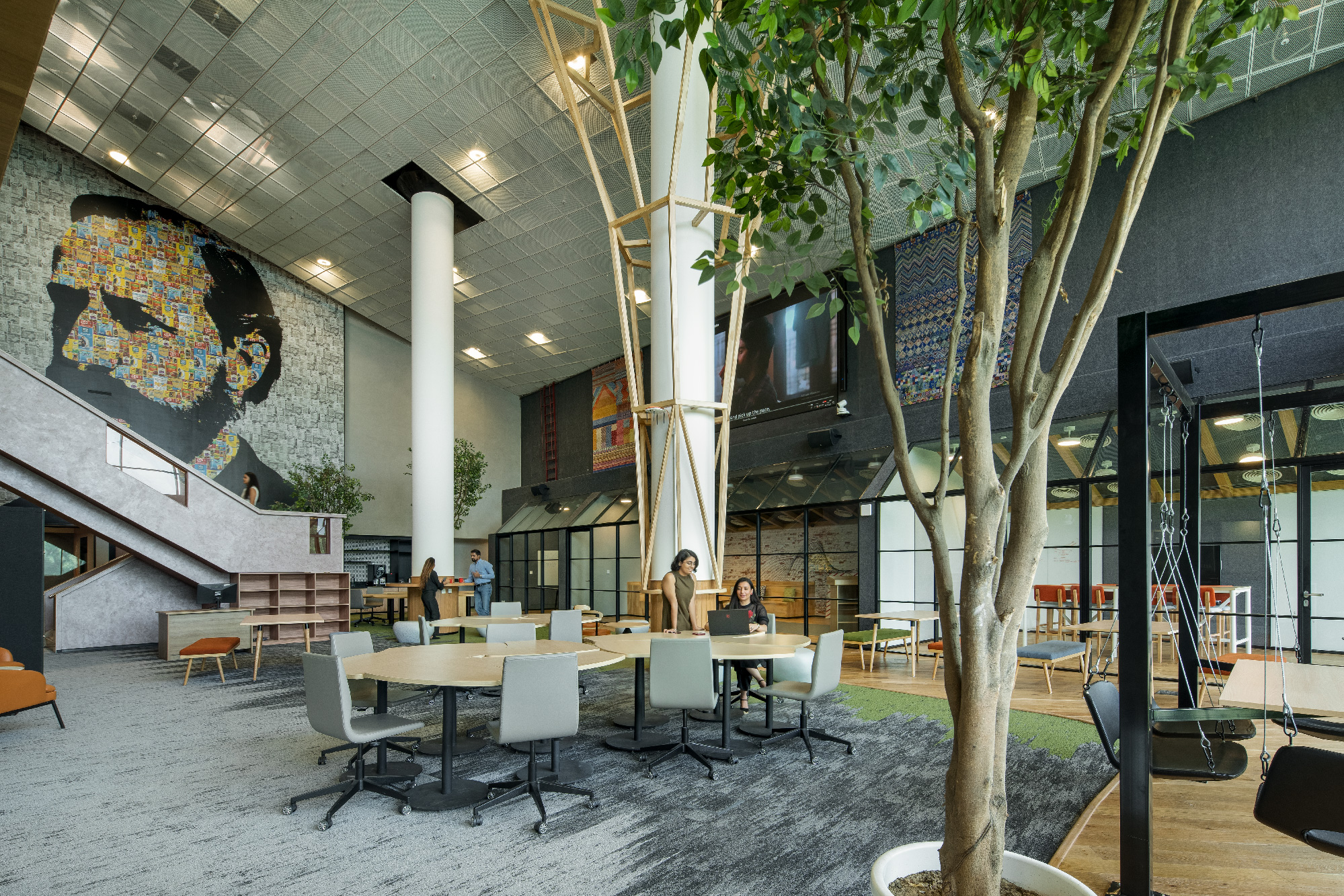
Nestle prioritises employee well-being and demonstrates this through their organisational practices. The office interiors are designed to promote biophilia and encourage activity-based work by incorporating natural elements and ample sunlight. Furthermore, each work floor features a business garden filled with greenery, creating an oasis-like atmosphere that blurs the lines between the indoors and outdoors. The greenery in this area promotes mindfulness among employees. This blog post explores the benefits of natural light and biophilic design elements in creating a wellness-centred workplace.
Ergonomics and Movement
A workspace that is well-designed and ergonomic can help reduce the risk of injuries and musculoskeletal disorders like back pain, neck pain, and carpal tunnel syndrome. Adjustable workstations that offer features such as height, seat depth, and angular adjustments can help employees work more comfortably. Chairs with lumbar support and adjustable armrests can also support the natural curvature of the spine.
Movement is important for maintaining employee health. To encourage movement, workspaces can promote the use of stairs by making them more vibrant and colourful. Prolonged sitting can increase the risk of obesity, diabetes, and heart disease. Companies can provide standing desks, and ergonomic chairs, and encourage regular breaks to promote movement.
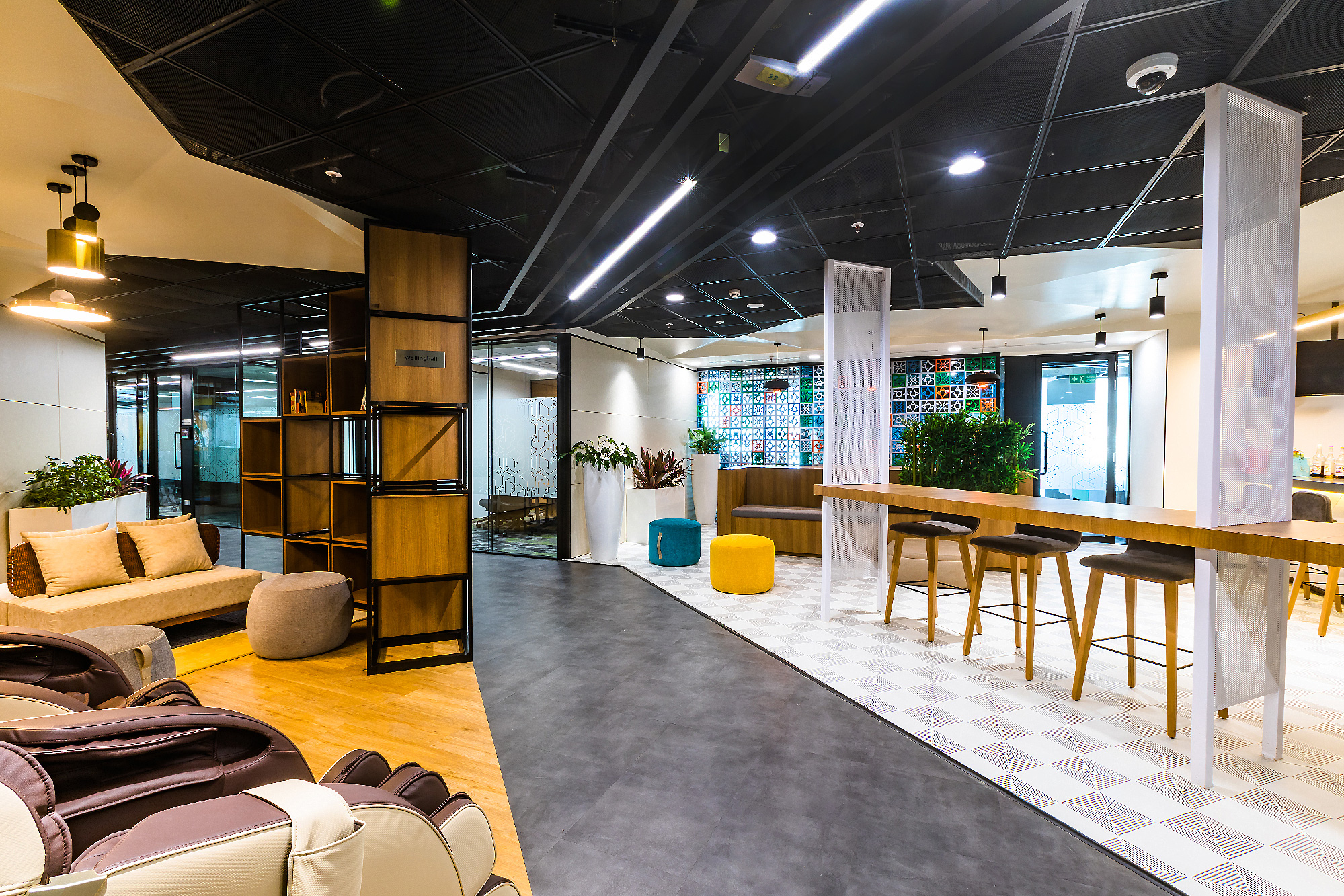
Rubrik's office in Bangalore, designed by Space Matrix, aimed to reduce physical strain on its employees by implementing a range of height-adjustable monitors, dynamic desks that can be transformed from sitting to standing positions, and versatile seating options. Ergonomic workstations and chairs were also put in place to ensure that employees maintain comfortable positions and healthy postures even during prolonged sitting periods. The workspace also features visible staircases leading to a sunlit indoor atrium and prominent signage that encourages active and lively workdays.
Social Connection and Community
To enhance employee well-being, social connection and community are crucial factors that companies should prioritise. Encouraging social connections can reduce stress and improve job satisfaction. One way to achieve this is by creating communal spaces and promoting team-building activities that foster a culture of collaboration. For instance, work cafes, amphitheatres, and game rooms are excellent examples of such spaces.

Healthy Food Options and Sustainability
The WELL standards encompass more than just the physical aspects of building construction and maintenance. They also emphasise the importance of promoting certain behaviours and practices within the workplace, such as the availability of nutritious food options. Recent research published in the British Journal of Health Psychology has shown that healthy foods can not only provide us with the necessary energy, but can also enhance our mood, increase our engagement, and boost our creativity.
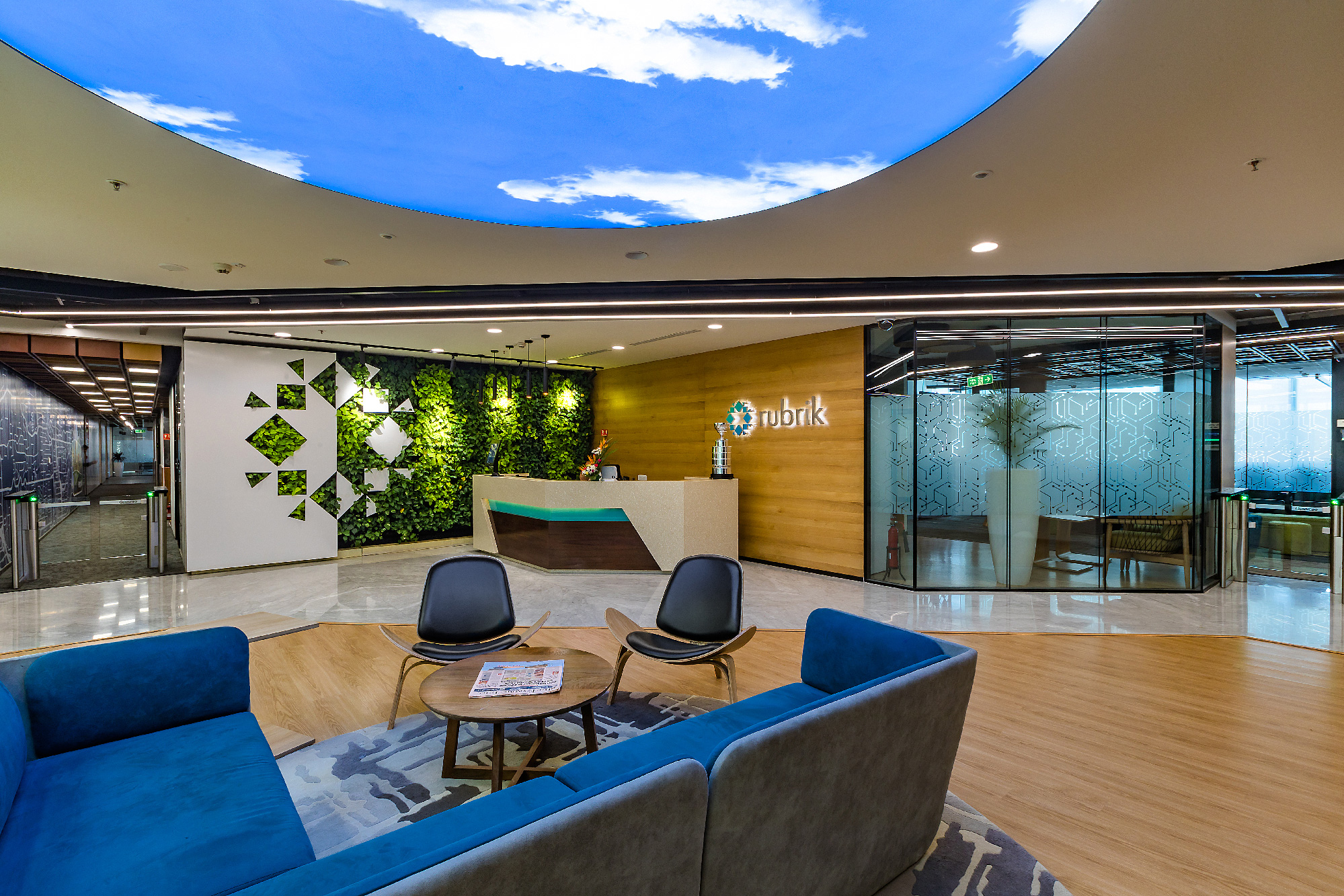
To comply with these guidelines, Space Matrix has established a healthy eating culture at the Rubrik office. The pantry food options are split evenly between fruits and vegetables, which are prominently displayed at eye level and at the beginning of the food service line to encourage their selection. Nutritional information for cooked or packaged foods is clearly displayed on screens, with sugar and other essential nutrients highlighted. These screens also indicate allergens and offer alternatives, enabling people to make informed and safe decisions. In addition, the cutlery, cabinets, and countertops are kept clean and hygienic, and assistance is available for reheating or storing food.
Flexibility and Adaptability
In order to create a workplace that promotes wellness and employee satisfaction, it's important to prioritize flexibility and adaptability in the design. By providing a variety of workspaces that cater to individual needs and preferences, companies can reduce stress and promote work-life balance. One effective approach is to create different zones with varying levels of adaptability, catering to different departments or climates within the organisation. Additionally, it's important to have the ability to convert spaces for larger organisational purposes, activities, and events.
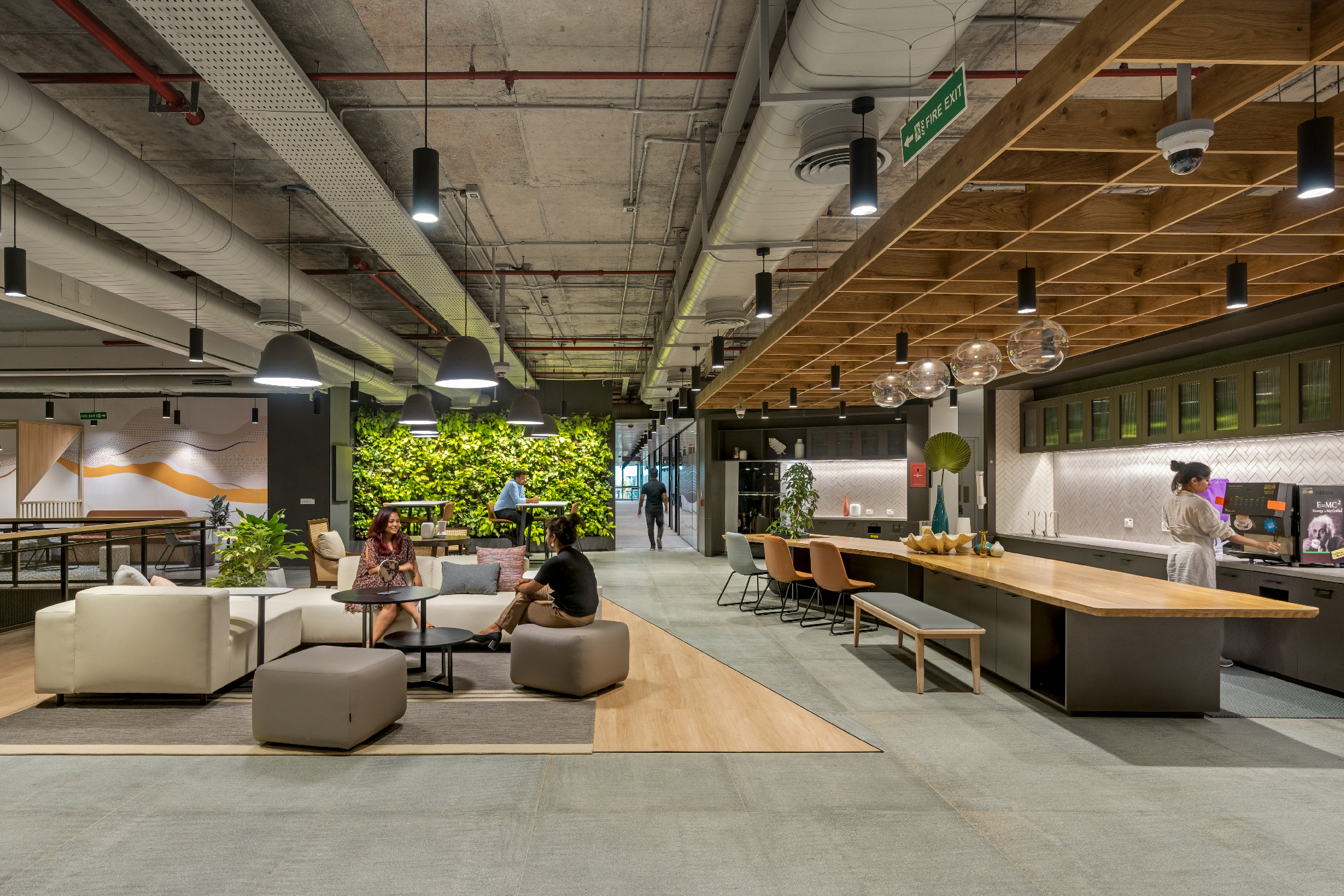
One great example of a workplace that incorporates flexibility and adaptability is the Legato office in Bangalore, designed by Space Matrix. The workplace strategy takes into account the future growth of the organisation and the needs of the workforce, using workplace technology and innovation to create a high-performing, employee-focused workspace that reflects the company's culture and values.
The office features a range of spaces including a welcoming entry zone with a hospitality focus, a spacious work cafe, various meeting rooms, and an open office area with flexible furniture that allows employees to choose the most suitable workspace for their needs. By incorporating flexibility and adaptability into the workplace design, Legato has created a space that promotes employee well-being and job satisfaction.
If companies focus on creating workplace designs that prioritise the well-being of their employees, they can experience a range of benefits such as increased job satisfaction, reduced absenteeism, and improved productivity. If you feel that your organisation could benefit from a wellness-centred workplace, we have the right solutions for you.
